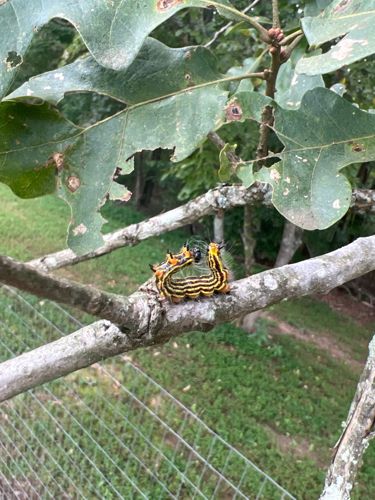Orange-striped Oakworm
Scientific Name: Anisota senatoria
Order & Family: Lepidoptera, Saturniidae
Size: Larvae (caterpillars) typically grow to about 1.5 - 2 inches (4-5 cm) in length.

Natural Habitat
Deciduous forests and woodlands, especially where oak trees are present.
Diet & Feeding
The caterpillars are defoliators, feeding primarily on the leaves of oak trees. They may also feed on other deciduous trees like maple, birch, and hazelnut.
Behavior Patterns
Orange-striped Oakworms are gregarious, often found feeding in large groups. Young caterpillars skeletonize leaves, while older ones consume entire leaves except for the main veins. They are active during the day. The adult moths are nocturnal and do not feed. There is typically one generation per year, with caterpillars present in late summer to early fall.
Risks & Benefits
Potential risks include defoliation of oak trees, especially during outbreaks, which can stress or weaken trees. However, healthy trees can often withstand defoliation and recover. They are generally not harmful to humans. As part of the ecosystem, they serve as a food source for birds and other predators.
Identified on: 9/7/2025